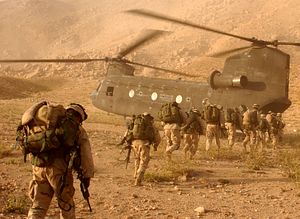According to a Reuters exclusive, the U.S. troop count in Afghanistan could be cut to below 10,000 troops — the minimum troop count recommended by the Pentagon. The U.S. Department of Defense recommended that should it become infeasible to field at least 10,000 troops in Afghanistan following the 2014 withdrawal, the United States should instead considering pulling out entirely. Currently, the post-2014 status of U.S. troops in Afghanistan remains indeterminate pending the final approval of a Bilateral Security Agreement (BSA) between the Afghan and U.S. governments.
Incumbent Afghan President Hamid Karzai has refused to negotiate the BSA with the United States, arguing that it is a matter for his successor to determine. Currently, Abdullah Abdullah is the front-runner in the presidential elections but he does not appear to have the requisite votes to prevent a run-off vote against runner-up Ashraf Ghani. Should a run-off vote occur, Afghanistan will acquire a new president at the end of May at the earliest.
Currently, there are about 33,000 U.S. troops in Afghanistan. General Joseph F. Dunford Jr., the top U.S. commander in Afghanistan, told the Senate Armed Services Committee in March that the Pentagon had until August to effectively plan for a small U.S. contingent force staying on following the end-of-year withdrawal. Under the BSA, the United States would maintain a limited force in Afghanistan to conduct counter-terrorism operations and advise the Afghan National Army in their fight against the Taliban. The August deadline appears realistic, even if a run-off vote were to occur. Both Abdullah Abdullah and Ashraf Ghani are supportive of the BSA and have publicly said that they would sign it should they win the presidency.
The Afghanistan troop numbers debate is part strategic and part political. Strategically, analysts are concerned that the relative power vacuum left following the withdrawal of a majority of international forces at the end of this year would galvanize the Taliban. Despite its successful election, Afghanistan remains fragile politically and Kabul’s ability to govern the remainder of the country could be challenged by the Taliban — particularly in the southern provinces where the Taliban has traditionally remained strong. Apart from the U.S., NATO is also negotiating a Status of Forces Agreement (SOFA) that is structured along the same lines as the BSA. Politically, a sustained presence in Afghanistan is growing untenable for several U.S. legislators whose constituents are jaded and perplexed by the United States’ continued presence in Afghanistan.
According to the Reuters report, a sub-10,000 troop presence in Afghanistan post-2014 will force the U.S. to make some tactical trade-offs. The U.S. troops remaining in Afghanistan would then almost entirely be focused on counter-terrorism operations.

































